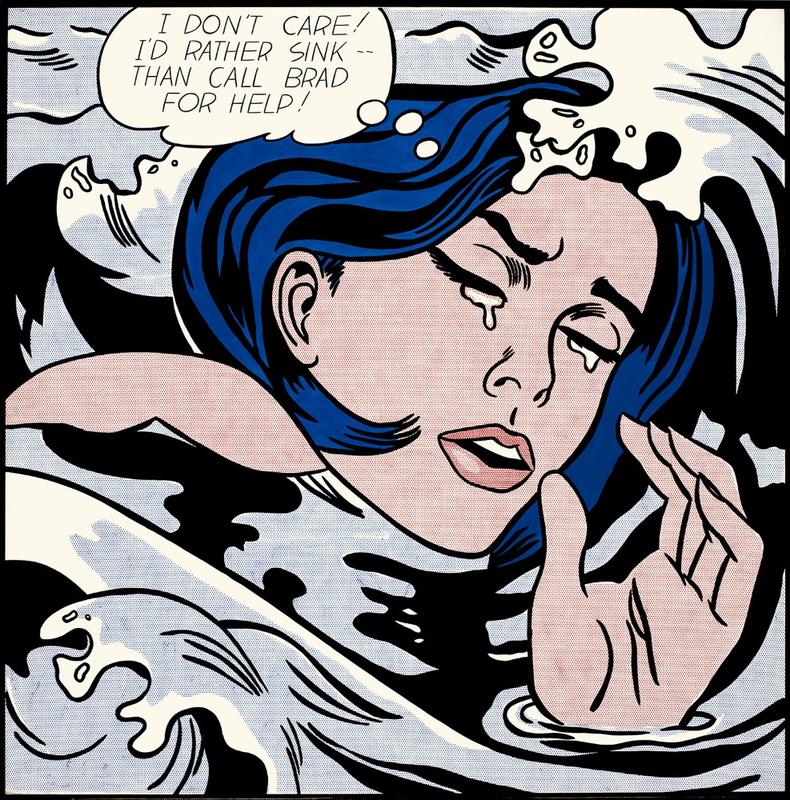Drowning Girl by Roy Lichtenstein is what Pop Art is all about!
This quirky art movement focused on capturing images of the everyday, and few artists did it better than our boy, Lichtenstein. Drowning Girl is one of the most iconic images from this artistic period and is definitely Lichtenstein’s most famous work.
While Lichtenstein may be revered in the art world, it wasn't because he was a prosperous fountain of creativity. Most of his paintings are copied directly from comic books and this piece is no exception to that. Many people have rejected Lichtenstein’s work for this reason; in fact, Life magazine published an article in 1964 calling him the worst artist in America. While some people may be dismayed with his blatant hijacking of other artists' work, it is my humble opinion that this is what makes Lichtenstein great. As Pablo Picasso said, “Good artists copy, great artists steal.”
This image of our blubbering heroine first appeared in the comic book Run for Love! published by DC Comics in 1962. In the original, we see both our drowning lady in the front while a hunksicle of a man hangs on to a wrecked boat in the background. The voice bubble in the original stated, “I don’t care if I have a cramp! I’d rather sink than call Mal for help!”. Lichtenstein shortened our martyr’s cry in his piece and changed the man’s name from Mal to Brad. Lichtenstein repeatedly used this quintessential beach bum bro name in his work, claiming that Brad sounded manly and heroic.
He may have tweaked and cropped the piece slightly to make it his own, but this painting is clearly still a spitting image of the original. In addition to commandeering this comic book image, he also altered the wave to look like Hokusai's woodblock print The Great Wave off Kanagawa.
With all of his art borrowing aside, Lichtenstein did create an aesthetic that was truly his own. In this piece, along with many others, Lichtenstein used Benday dots to create his images. Benday dots are a repeated dot pattern used by mechanical mass printers to create images on the cheap. Lichtenstein painstakingly enlarges and paints all of these dots by hand, and claims that he did so to comment on the worst side of commercial art.
This piece exhibits the clean crisp lines and bold colors that characterize the Pop Art movement. Along with a sexy young babe and a romantic air to the piece, what’s not to love? Well, maybe everything but that jerk Brad.





















Drowning Girl is a play about a girl who falls into infinity and begins to grow up. She feels trapped, but also at home in the great sea of memory. She uses her hands as her eyes, hearing, and mouth in the water that surrounds her. It's a physical journey of a young girl growing towards adulthood while teeter-tottering through time.